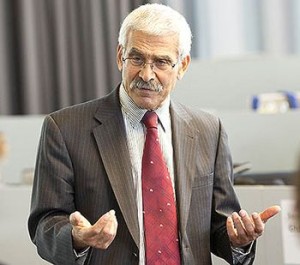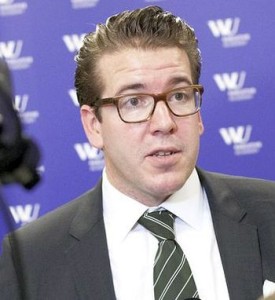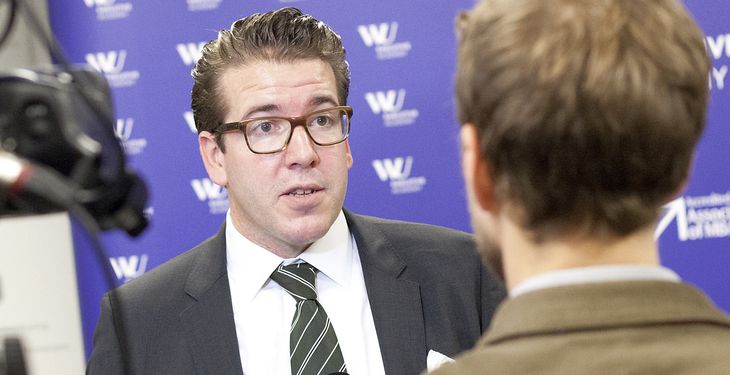In the years to come, the world will face tremendous resource challenges. Energy has become a global phenomenon. However, what will the global energy supply of the future look like and how can managers in that field prepare for what lies ahead? In the following interview, Dr. Adnan Shihab-Eldin, Former Secretary General of OPEC and Director General of the Kuwait Foundation for Advancement of Sciences, and Prof. Jonas Puck, Academic Director of the MBA Energy Management, give their personal energy outlook for the 21st century and outline the special skills and knowhow needed for the imminent transformation of the industry.
This interview was firstly published in the WU Executive Academy website.
Dr. Shihab-Eldin, from your perspective as one of the leading experts in the field, what is your global energy outlook for the next couple of years?
Dr. Shihab-Eldin: The next two years will see a very volatile oil market as it attempts to rebalance supply with demand, both subject to large uncertainty. The current excess supply, mainly due to rapid growth of US tight oil production, has resulted in sharp oil price drop as OPEC, led by Saudi Arabia, decided last November not to interfere and cut their production. Rather, OPEC decided to let the market do the rebalancing on its own in order to maintain its share of the market, given its members hold more than 2/3 of the world’s proven oil reserves.

Which role do the Iran agreement and other Middle East conflicts play in this regard?
Dr. Shihab-Eldin: The risk to the just mentioned scenario comes mainly from Iran, following the successful conclusion of an agreement between Iran and P5+1 on Iran’s nuclear program, and the ensuing gradual removal of sanctions. The physical impact of the agreement on growth of Iran’s oil production and exports will be gradual and not substantial within the next six to 12 months. Another risk, in the opposite direction – though less likely – comes from a possible escalation in the Middle East conflicts, with armed violence spilling over to some of the major producing countries, in particular in the Gulf and North Africa.
So this is your scenario for the next two years. What about the mid and the long term?
Dr. Shihab-Eldin: Over the medium to long term, average oil prices are likely to hold for a few years within a ~60-80 $/b range till 2020 or so and then begin to rise, gradually thereafter to a new ~80-100$/b range, with continued high volatility.
Over the very long term, beyond 2040, the impact from a more comprehensive global and robust response to climate change challenge will undoubtedly constitute the dominant risk to oil prices. The response to a new set of strong climate change policies will impact both supply and demand for oil and fossil fuels in general. This will be reflected in an accelerated development and deployment of low carbon energy technologies, mainly renewable for power generation and biofuel as an alternative to oil-based liquid fuels. Demand growth for oil will also slow down as the use of hybrid and electric vehicles will expand and capture a sizable part of the transportation sector. Yet demand for oil and gas as well as coal (fossil) fuels will continue to grow albeit very slowly for at least the next two decades, and possibly longer, especially with efforts to reduce the carbon footprint from the use of fossil fuels. Carbon-capture and storage (CCS) technology, if successfully developed and deployed, could be a game changer for the long-term prospect for coal and gas in the power sector and for oil in the transportation sector.
Energy trading, smart grids, energy efficiency – these are only a few examples of topics energy experts are dealing with at the moment. Dr. Shihab-Eldin, what are your personal “hot topics” in the energy business?
Dr. Shihab-Eldin: Definitely smart power, both on the supply and the demand side, driven by exponential innovation in IT applications, as well as high-capacity, fast-charging new battery technologies are the innovations most likely to be successfully developed and deployed widely over the next 5-10 years.
Are there any pre-commercial innovations/technologies with the potential of allowing for a real energy revolution, i.e. the exit from nuclear and fossil-fuel energy? If so, which are the most promising ones from your point of view?
Dr. Shihab-Eldin: Actually, there are quite a few technologies which do have the potential, but let me focus on the four most promising ones: First, high-storage capacity and fast-charging and low-cost battery technology would truly constitute a game changer away from the use of fossil fuels. Second, nuclear power should not be dismissed altogether. The successful development of safe, small and medium generation nuclear power reactors (SMR) could result in a renewed nuclear renaissance with robust growth for the global use of nuclear power. Currently, there are a number of innovative SMR designs being developed with the support of private sector and government funding. Third, beyond 2040, nuclear fusion may still come of age, despite the very slow development path for more than 50 years. And fourth, carbon-capture and storage (CCS) technology could, as I mentioned before, allow for a substantial change in the extended use of fossil fuels, this time on the positive side, prolonging their use as major energy sources well into the 22nd Century.
Prof. Puck, given the just outlined scenarios, what are the particular challenges for managers in the energy business that they are going to face in the future? What will be different from the way they are doing business today?

From your experience, will there be any new areas of activity for executives working in the global energy business which currently do not exist?
Puck: I guess that the topic of sustainable growth, even though already very important today, will further raise in importance over the next years, specifically in the field of energy management. This imposes great opportunities for the industry, but also goes in line with a number of challenges: employees need to be capable to handle multiple stakeholder demands simultaneously and need to manage and communicate effectively while under pressure. That’s why I strongly call for dual managerial and industry-level education: employees today but even more in the future need to combine excellence in industry-knowledge with top-level managerial and leadership skills.
Prof. Puck, you are Academic Director of the MBA Energy Management. How would your program cater for the current and future needs of this very special target group?
Puck: Given the focus on the development of leadership skills and managerial capabilities, our MBA program is definitely of tremendous help to institutions and companies that intend to develop their talent. The combined focus on relevant managerial competences with energy industry knowledge goes far beyond the offerings of most Executive MBA programs and can support energy companies’ endeavors in global talent management. After all, it is not without reason that people from all over the world come to study in our program as the overall package – the content, the faculty and the peer group – is quite unique. Besides that, our self-employed graduates represent a great talent pool for companies. Looking back we have seen many alumni making significant career moves after graduating from our program.
WU Executive Academy – Executive Education at the Highest International Level
The WU Executive Academy of the Vienna University of Economics and Business (WU), Europe’s largest business university, brings more than 100 years of experience and an excellent reputation to the field of executive education and belongs to the leading business universities worldwide.
The executive education portfolio of the WU Executive Academy includes MBA and Master of Laws programs, university certificate programs, custom and short-focused programs. In recent years, it has become one of the leading providers in Central and Eastern Europe.
The WU Executive Academy is one of only two business universities in the German-speaking world to be EQUIS and AMBA accredited and is top-listed in the leading international rankings each year.
Each year, as many as 750 graduate students, and about 1,200 managers, experts and high potential from over 75 countries study in our executive education programs. At present, residencies and programs are con¬ducted in more than 15 countries on three continents.
The faculty of the WU Executive Academy consists of both internationally renowned professors and top executives. Together, they provide the latest scientifically-based knowledge and in-depth views of state-of-the-art applications of management models.
The new campus WU
In September 2013, the WU and the WU Executive Academy moved to the new “Campus WU” near the city center and adjacent to one of Vienna’s largest parks. The WU Executive Academy building was designed by the Spanish architects NO.MAD Arquitectos. It resides in a square-sided tower comprising seven floors, featuring a front made of glass and aluminum. Both sky and nature are mirrored in the building, which blends perfectly into its surroundings. The new campus offers world-class facilities and state-of-the art resources to the students, enabling the WU Executive Academy to provide first class executive education.
